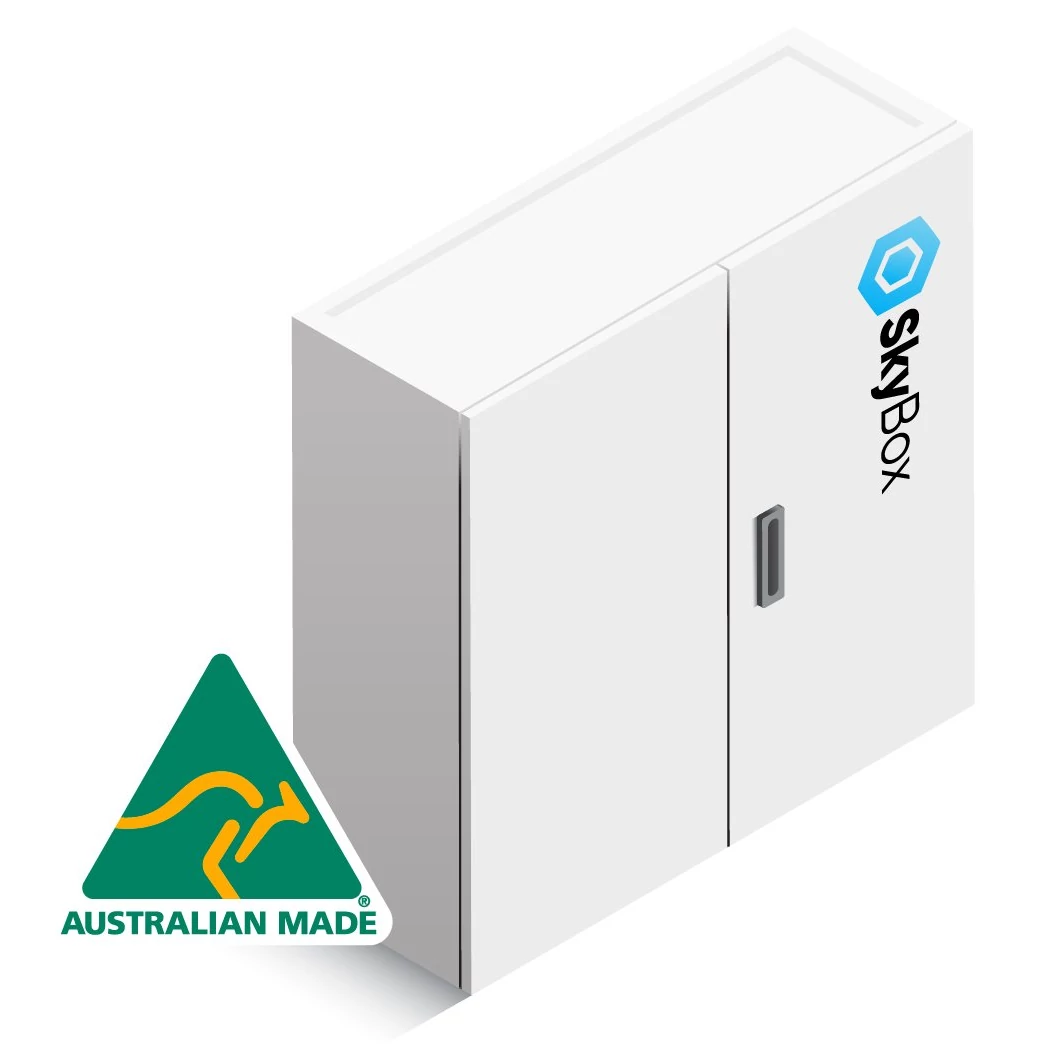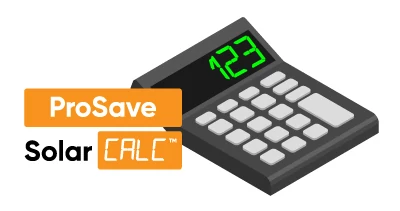Solar inverters explained
An inverter is a component which works by converting the generated direct current (DC) current that solar panels make to alternating current (AC) usable in your household electrical system.
The inverter is one of the most complex components of the PV solar system. Because the inverter is doing much of the ‘heavy lifting’ when it comes to power conversion, it is often worth investing a little bit more into this part of the solar system to gain more longevity from your investment.




In Australia, solar inverters must be approved by the Clean Energy Council (CEC) and meet Australian standards. These standards help ensure a baseline of qualities for Aussies purchasing solar equipment. You can find more information on approved inverters and other solar equipment on the CEC website.
What size inverter do I need?
The size of your inverter is directly related to the size of your solar array. Inverter size is rated in kilowatts (kW) and indicates the maximum amount of solar-generated input/output energy the inverter can manage. Following CEC rules, an inverters maximum capacity must be at least 75% of your solar arrays capacity. Solar systems need to adhere to these rules to be eligible for STCs (Small scale Technology Certificates), another name for Australia’s current federal government solar rebates.
For example, a 6kW solar array may pair with a 6kW inverter. Since a solar array rarely generates its total rated power output, we often use a lower-rated 5kW inverter for a 6kW system. With this approach (maxing out the solar array size for the inverter), adding more panels to the same inverter will be restricted at a later stage. Other sizing variables include local regulations regarding exporting energy back into the grid. These are all general rules for inverter sizing, and it’s worth seeking specific advice regarding your state and solar regulatory bodies to see what may be possible for your solar and battery system.
Types of inverters
String inverters
‘String’ inverters are the most common inverter and a standard option for most households. Solar panels share the same power cables in a row called the ‘string’, where these inverters get their name. The simplest and least expensive option, the ‘string’ of solar panels, is connected to the inverter, most commonly mounted on an external wall near the electrical switchboard.
Since panels in a string share a line in series, if one panel has a problem such as being shaded, excessively dirty, or failing for some other reason, then the output of the entire string is diminished. You can prevent these scenarios by keeping your system well maintained and monitoring the performance to detect any change in performance quickly and efficiently. Some inverters (such as the SMA range) also include software to help counteract these ‘string’ performance risks.
Brands: ABB, Fronius, Goodwe, Huawei, SMA/Sunny Boy, Sungrow
Microinverters/ DC Optimisers
Instead of one central inverter for the entire system, each solar panel may have an individual inverter, reducing the impact of any shading or damaged solar panels. Each panel converts DC to usable AC independently of its neighbouring panels. Therefore, if one-panel experiences reduced production, the overall impact is much less than a typical string inverter system. As these systems are more expensive, the most common scenarios for micro-inverters are when shade is unavoidable, or the roof is an unusual layout. Microinverters and DC Optimisers may also allow panels to be monitored individually in an app. These individual inverters help know precisely how each solar panel performs, quickly pinpointing any problems. It is also helpful for commercial solar installations where it would not otherwise be practical to monitor performance across hundreds of solar panels.
Brands: Enphase, SolarEdge, TIGO/SMA, Huawei
Hybrid inverters – compatible with solar batteries
When planning to install a new solar system and add a battery (now or later), it is crucial to consider the compatibility between the inverter and battery technology. Hybrid inverters can be connected to a compatible solar battery to store the excess energy generated.
Not all hybrid inverters can work with all batteries. Therefore, it’s best to do your research in advance to avoid issues when adding a battery later. Suppose you are not sure when you will be adding a battery. In that case, it may be more viable to purchase a suitable string inverter or microinverters. When it’s time to add a battery, you can include an extra battery inverter at this time rather than investing in a ‘hybrid’ option upfront. Although hybrid inverters are priced higher than conventional string inverters, improvements in popularity and technology mean recent prices are more competitive.
Brands: Fronius, Goodwe, Huawei, Electronics, SMA/Sunny Boy, SolarEdge, SolaX,
Battery inverters – for existing systems.
Suppose you want to add a battery to your current system and don’t wish to replace your existing inverter. In that case, you can connect a battery with a dedicated inverter rather than swapping out your inverter for a hybrid inverter. Battery inverters turn the stored power from the battery into AC power for your household and deliver solar power to the battery for storage. Some batteries, such as the Tesla Powerwall 2, have a built-in AC battery inverter.
Brands: Enphase, SMA/Sunny Boy, Selectronics, Sonnen, LG
Choose an inverter to view more information
Solar Inverters and Blackouts
Most solar and battery systems shut down when there’s a blackout. Some inverters even let the battery power the house in a blackout or off the grid, which may be worth considering if you live in a blackout prone area. Since most solar homes are grid-connected, the Australian guidelines state that an inverter needs safety features to prevent energy from being pushed back into the grid (during a blackout), presenting a potential safety hazard to line workers. The simplest way to achieve the safety standard is for the inverter to shut down entirely during a blackout. More sophisticated inverters have ‘anti-islanding protection’, which separates your home from the grid while keeping the energy supplied to the house during a blackout. Blackout protection, or off-grid capability, allows your home to continue running from your solar and battery during a blackout.
Where can I install my solar inverter?
Most string inverters are installed near the main switchboard, preferably shaded or sheltered. Inverters designed for outdoor installation are weatherproof, though it’s best practice to protect them from excessive heat (direct sunlight), leading to performance degradation and lifespan. If installed on a sunny wall, it may be worth fitting a shading cover.
Microinverters and DC Optimisers are connected to the panels individually, usually on the roof, and sometimes contain no wall-mounted unit. The same rules apply for a ‘string’ inverter (above) for those that include a mounted wall unit.
How much do inverters cost?
While prices vary depending on the size and brand, an average 5Kw string inverter will be between $1000 – $2000. Hybrid inverters are a little more, with an average of about $3000.
Due to the modular nature of microinverters or DC Optimisers, the initial outlay depends on how many panels need inverters attached. One micro inverter can cost around $200, and a standard estimate is a system with micro-inverters will cost about 20% more than a traditional string inverter system.
If a system requires a separate battery inverter, this can add $1500-$3000 to the overall cost. Blackout or off-grid protection can add between $1500 and $5000 depending on how ‘powerful’ it is.LINK TO BLOG ABOUT OFF GRID POWER SYSTEMS https://skyenergy.com.au/all-about-blackout-protection/
What are the best inverter brands?
The inverter is the most complex and critical system component, so investing in a good brand is recommended. Tigo, Fronius, and SMA are highly regarded brands with track records for producing quality solar inverters.
Warranty
The current Australian industry standard is a 10 Year Warranty for a solar, hybrid, micro or battery inverter.
Inverter Monitoring and Security
Monitoring can be configured either by software or an indicator panel/screen. It’s worth checking your system monitoring periodically to ensure your system produces maximum efficiency and any issues are detected early for rectification. Indicator lights will show the system is functioning normally, and if your inverter has a display panel, you can view more information, such as a range of long term data. Today, most inverters come with wireless mobile phone monitoring and not with a screen anymore.
As mentioned above, most current inverters offer more complex monitoring options in Wi-Fi or BlueTooth enabled applications. These apps log system performance and provide information viewable across days, weeks, seasons, etc., and track power consumption or power feeding back into the grid.
When connecting your inverter to the internet, be sure to secure your network with encryption and passwords.

